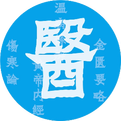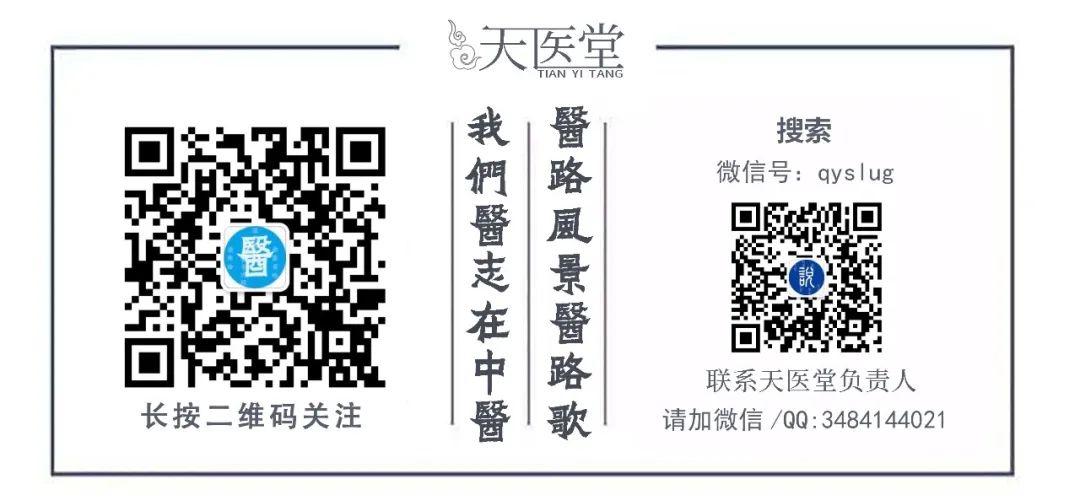Five Methods of Bloodletting and Needling by Dr. Zhou Deyi
Dr. Zhou Deyi is a renowned traditional Chinese medicine (TCM) physician from Anhui Province, nearing his eighties, with over fifty years of clinical experience, particularly skilled in acupuncture. His unique method of bloodletting through needling is distinctive. The author has deeply learned from Dr. Zhou during clinical practice and will summarize his bloodletting techniques for further dissemination.
1. Segmental Bloodletting Method
This method selects acupuncture points based on the location of the disease. For conditions affecting the head, the Taiyang (Temple) point is needled; for conditions above the navel, the Shizhe (Cubital Fossa) or Quxi (Curved Pool) points are used; for conditions below the navel, the Weizhong (Middle of the Knee) point is needled. These points are located near superficial major veins, making them suitable for bloodletting. The Ling Shu states that the Taiyin, Jueyin, and Yangming meridians are all blood-rich meridians. For conditions with excess blood, bloodletting is advisable. The Taiyang point is an extraordinary point outside the meridians, effective for treating various head and facial diseases, while Shizhe and Weizhong are connecting points, primarily addressing internal organ disorders, hence Dr. Zhou’s selection.
During clinical practice, it is often necessary to combine other points for needling. This method is frequently used for deeper conditions or organ diseases, where there are both local primary symptoms and accompanying systemic symptoms.
For example, for headaches with red, swollen eyes and fever, bloodletting at the Taiyang point and needling Hegu (Joining Valley) is effective; for headaches and sore throats with fever, bloodletting at the Taiyang point and needling Shaoshang (Lesser Shang) and Quchi (Curved Pool) points; for breast swelling and pain with fever, bloodletting at the Shizhe point combined with local heat application; for upper abdominal pain and vomiting with fever, bloodletting at the Shizhe point and needling Zhongwan (Middle of the Stomach) and Liangqiu (Beam Mound) points; for right lower abdominal pain with constipation and fever, bloodletting at the Weizhong point and needling Zusanli (Three Mile) and Tianshu (Heavenly Pivot) points; for lower abdominal pain with purulent blood in stools and fever, bloodletting at the Weizhong point and needling Quchi and Tianshu points, etc.
2. Meridian-Based Bloodletting Method
This method is guided by the theory that “where the meridian passes, the treatment applies”. It involves bloodletting along the course of a specific meridian or several meridians affected by disease. During clinical practice, the disease is categorized by meridian, and bloodletting is performed along the surface meridians, following the pathways of the meridians and collaterals. Dr. Zhou also mentioned, “If it cannot be seen, take it from above and below.”
This means that this method is not limited to points or painful areas but can also involve bloodletting at superficial veins along the affected meridian, emphasizing that “it is better to lose the point than to lose the meridian”.
For example: for acute low back pain, if the pain is on both sides of the spine, it indicates obstruction of the Foot Taiyang meridian, bloodletting at the Weizhong point and needling the most painful area of the lower back; if the pain is along the spine, it indicates obstruction of the Governing Vessel, bloodletting at the Renzhong (Human Center) point and needling Qihai (Sea of Qi) and Taichong (Great Rushing) points; for wind-heat causing sore throat and difficulty breathing, obstruction of the Hand Taiyin meridian, bloodletting at the Shaoshang point and needling Tianzhu (Heavenly Pillar); for vertex headaches, dizziness, and eye swelling, obstruction of the Foot Jueyin meridian, bloodletting at the Baihui (Hundred Meetings) and Taiyang points and needling Fengchi (Wind Pool) point, etc.
3. Syndrome Differentiation Bloodletting Method
This method is guided by the theories of organ differentiation, qi and blood differentiation, and meridian differentiation, selecting points based on syndrome differentiation for bloodletting.
For example: for women with dysmenorrhea and cold pain in the lower abdomen, if the pain occurs before menstruation, it indicates qi stagnation and blood stasis, with obstruction of the Foot Three Yin meridian, bloodletting at the Sanyinjiao (Three Yin Intersection) point, which benefits the liver and kidneys and regulates menstruation, similar to the Si Wu Tang (Four Substance Decoction), needling Qihai to regulate qi, and moxibustion at Guanyuan (Gate of Origin) to warm the uterus, collectively achieving the effects of regulating qi and nourishing blood;
for skin itching and redness, indicating heat in the blood, bloodletting at the Sanyinjiao and Xuehai (Sea of Blood) points to regulate blood, clear heat, and regulate menstruation, supplemented by needling Quchi to dispel wind and harmonize the nutrients, and needling Shaofu (Lesser Palace) to clear the heart and dispel heat;
for acute ankle sprains, indicating local meridian obstruction and qi and blood stasis, bloodletting at the Ashi (Ah Shi) and Taichong points to promote qi and invigorate blood;
for carbuncles and boils, based on the principle that “all pain and itching sores belong to the heart”, bloodletting at the Quxi point to drain heat from the heart, and if accompanied by fever, needling Dazhui (Great Vertebra) and Quchi points; if the sore appears on the neck and back, bloodletting at the Weizhong point to clear heat from the Taiyang meridian; if it appears on the ribs, bloodletting at the Yanglingquan (Yang Mound Spring) point to clear heat from the Shaoyang meridian; if it appears on the limbs, bloodletting at the meridian points or Ashi points to drain meridian heat and detoxify.
4. Localized Bloodletting Method
This method involves bloodletting at the local site of the disease. It can be performed at acupuncture points or localized areas, with a relatively limited range, often suitable for localized and superficial conditions.
For example: for swollen and stiff tongue, bloodletting at the Jinjing (Golden Liquid) and Yuye (Jade Fluid) points; for toothache and gum swelling, bloodletting at the affected area and needling Hegu; for psoriasis with itching and scaling, using plum blossom needles to prick the local area for bloodletting, combined with cupping; for late-stage filariasis causing “rubber leg”, bloodletting around the affected leg and needling Zusanli and Sanyinjiao; for joint sprains and swelling, bloodletting at the painful points, etc.
5. Emergency Bloodletting Method
This method is specifically used for emergencies in critical conditions, with four main characteristics:
1. Located at the distal ends of the limbs, or using the twelve jing points;
2. At superficial major veins;
3. Using extraordinary points outside the meridians;
4. Selecting points from the Governing Vessel and Pericardium meridians.
This method provides strong stimulation, rapid effects, and has the functions of unblocking meridians, dispelling heat, and awakening consciousness.
For example, for syncope with inability to speak, bloodletting at the Shixuan (Ten Diffusions) points and needling Renzhong; for grand mal epilepsy, bloodletting at the Quxi and Weizhong points and needling Dazhui and Jiutiao (Nine Points); for stroke with closed mouth, bloodletting at the Taiyang, Quxi, and Weizhong points, or at the twelve jing points, and needling Yongquan (Bubbling Spring) and Laogong (Palace of Labor); for snake bites, if on the upper limb, bloodletting at the Quxi and Baixie (Eight Evils) points; if on the lower limb, bloodletting at the Sanyinjiao and Bafeng (Eight Winds) points; for heat stroke, bloodletting at the Quxi and Shixuan points and needling Yongquan, etc.
Conclusion
The bloodletting method has the effects of removing stasis and generating new blood, unblocking meridians, reducing swelling and pain, and clearing heat. It is mainly used for conditions of excess heat and stasis pain. The five methods mentioned above can be flexibly combined by Dr. Zhou. The needles used are often three-edged needles, or thick hair needles and plum blossom needles, with the amount of bloodletting depending on the condition, generally aiming for about 7ml of blood. The technique should be light, shallow, and quick, and after bloodletting, do not press on the puncture site; it is best to let it stop bleeding naturally.
If the blood does not flow smoothly, it is necessary to massage around the puncture site or use cupping; if there are superficial inflammations and ulcers, moxibustion can be used as an adjunct.
Strict disinfection should be performed before the procedure, and caution should be exercised in patients with coagulation disorders, weak constitution, and pregnant women. Additionally, bloodletting should ideally be performed at the puncture site; for needling, it should be quick and stop immediately upon puncturing, regardless of whether blood flows or not, as there is a distinction between the two.
Previous Recommendations
Li Dui – Needling and Bloodletting for Facial ParalysisAcupuncture Health | Weizhong – One Point Can Regulate Many Diseases, Bloodletting Can Treat Ulcers and PsoriasisPractical Experience for Shoulder Pain: Movement Analysis, Point Selection, Needling Techniques, and Bloodletting, Follow This for Effectiveness!
— THE END —
▶ Copyright Statement:
1. Source: This article is excerpted from the Journal of Anhui University of Traditional Chinese Medicine, Volume 8, Issue 3. Compiled by Qin Lihong.2. This platform aims to disseminate knowledge of TCM culture, and the copyright belongs to the relevant rights holders. We respect knowledge and labor; please retain copyright information when reprinting. If there are any improper uses, please feel free to contact us for negotiation. Contact WeChat: qysxlq3. For advertising cooperation and submissions, contact WeChat:qysxlq





